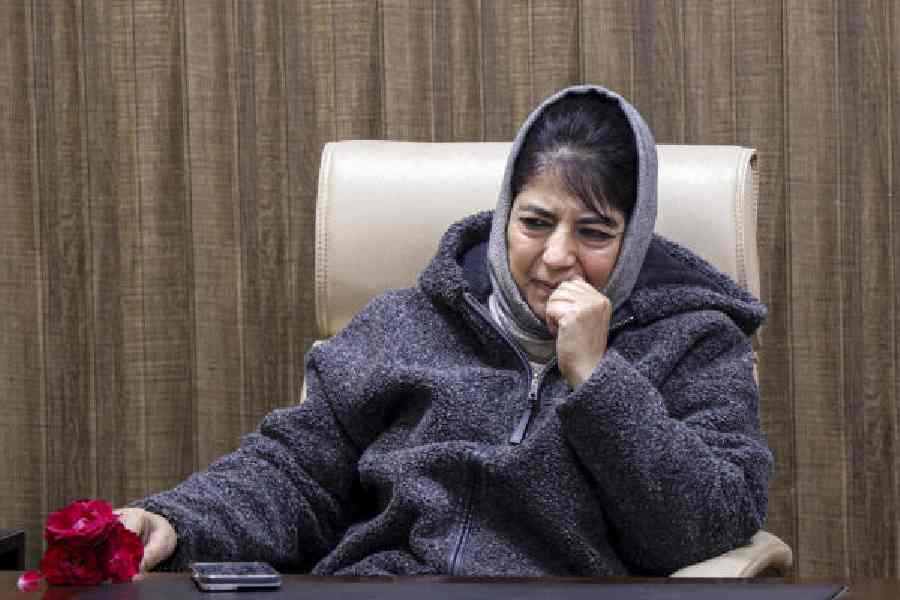Revisiting Gopal Chhotray (1916-2002) and writing about him today is like what Italo Calvino would call a “voyage of discovery” that comes with “the first reading” of a writer. His contribution to theatre, radio play, cinema has been immense. He had the rare distinction of being a recipient of both the Kendriya Sahitya Akademi and the Sangeet Natak Akademi awards. But, sadly it was during his own lifetime that he saw the gradual decline of Odia theatres. Even the radio plays were no longer in vogue by the time of his death, unless an odd play was performed in schools, colleges or at the villages. Now, years after his death, theatre has staged some sort of a comeback, and it is time to revive one of the pioneers of Odia theatre. And what better occasion, than to revive theatres on his birth centenary?
As a playwright, Chhotray needed to introduce every single character on stage, the dramatis personae. But, the irony of it all, is that he would never feel the need to introduce himself in the same way. Perhaps, he chose to remain the playwright even in his own autobiography. He would introduce the (other) characters (Pattnaik, Samal, Sridhar babu) first, then the stage setting (for example the primary school in the village), and then convey the social message (as was characteristic of his works) of doing away with caste-based discrimination.
His autobiography titled Pathik (The Traveller) is not about the journey of Chhotray’s life alone. It is at the same time a testament to the history of his times. Just like his plays, which would serve as windows to society and history, his autobiography too offers accounts of various events - from local, national to larger issues with personal anecdotes. Many of the incidents narrated in his autobiography also seem to have served as lessons that Chhotray learnt himself. One of these was the lesson in self-effacement and probably that is why he refuses to call it an autobiography; though in literary idiom it might be called a memoir.
Chhotray’s autobiography is not an expedition but an observation, and at the same time a son of the soil (incidentally, the first novel he read had a similar title Matira Manisa). For him, it is about the changing the landscape that a traveller witnesses while travelling from his native Purunagarh to his beloved city Cuttack, which would be a crucial milestone during the progress of the traveller. Chhotray would observe it in its glorious days and dark times. Cuttack, at the same time, bears testimony to his trials and tribulations and his triumph.
Not only did he live in Cuttack till his death (except for the brief period between 1943 and 1948) he made the characters of his major plays live in the same city, and here he would meet Janata and Annapurna (both theatre groups). Chhotray’s relentless toil gave not only Cuttack, but the whole of Odisha a massive collection of 35 plays, 17 geetinatyas (musical plays), two collections of short stories, songs, dialogues, screenplays, long playing records and more than 500 radio plays. But, it is not just in terms of figures that Chhotray’s contribution is to be acknowledged. He belongs to the league of writers who received both public accolades and critical acclaim.
Chhotray’s plays beginning with Pheria (Come back!) and Bharasa (Trust) ran to packed houses, earning him praise and the theatre companies made huge profits. Parkamal (The Quill) went on to be staged before an august audience after being selected as the best Odia play at the National Theatre Festival in 1954. His versatility is reflected by a range of themes and the complex treatment of characters in his plays. His roving mind would capture and reproduce scenes from domestic life to the chaotic political panorama, and sometimes introspectively brood over artistic dilemmas on the stage. For instance, Sahadharmini (The Wife) makes oblique references to World War II and Indian nationalism. Parkalam and the unpublished Swagatam Rajtantra (Welcome Monarchy!) raises serious political questions.
Chhotray was both an innovator and a discoverer. The revival of geetinatyas is a clear example of the same. He collaborated with the poet of the masses Baishnab Pani and provided geetinatyas a dignified platform. After the broadcast of Pani’s Rangsabha Geetavinay in 1960, All India Radio was flooded with letters of appreciation. He would soon become a household name with his monthly radio play Poora Poori Paribarik (The True Family Show) which would continue to entertain people for almost three years.
Just as Chhotray had revived a form of art, he adapted Fakir Mohan’s Patent Medicine, which had enjoyed cult status for years. His collaborator was the legendary Akshaya Mohanty. Their combined endeavour produced another classic titled Srimati Samarjini. He was no stranger to western theatre and had successfully adapted and popularised Ibsen’s An Enemy of the People and Fielding’s The Mock Doctor.
Chhotray was undoubtedly a famous artiste and a sincere collaborator, he was also a great friend. His long years of friendship with theatre stalwarts such as Samuel Sahu, Niranjan Satpathy and Bibhuti Pattnaik (last year’s Sahitya Akademi winner) bear witness to this fact. These relationships were not only marked by mutual respect and fondness, but also by bonds of shared commitment to art.
The saying art resembling life might sound cliché; but to say that the story of the artists in the history of art would not be an exaggeration, not at least in the case of Gopal Chhotray. For, not only would he innovate and experiment with new forms and techniques, but his gradual withdrawal from theatre also signalled the curtains-down for dramas in Odisha. The best tribute Odias can pay to Chhotray on the occasion of his birth centenary would be to seize the opportunity of the new enthusiasm for theatre and continued popularity of jatra and to re-launch his works through radio plays, television serials and certainly through the stage.
(The author teaches English at Delhi College of Arts and Commerce, University of Delhi, where he is a research scholar)











